Gin Yeti 6
£2,200.00
Description
Technical Specifications
| Size | 21 | 23 | 25 | 27 |
|---|---|---|---|---|
| Flat area (m2) | 20.80 | 22.80 | 24.80 | 26.80 |
| Flat span (m) | 9.96 | 10.43 | 10.88 | 11.31 |
| Flat aspect ratio | 4.77 | 4.77 | 4.77 | 4.77 |
| Projected area (m2) | 17.85 | 19.57 | 21.28 | 23 |
| Projected span (m) | 7.93 | 8.30 | 8.66 | 9.00 |
| Projected aspect ratio | 3.52 | 3.52 | 3.52 | 3.52 |
| Chord (m) | 2.59 | 2.71 | 2.83 | 2.99 |
| Number of cells | 36 | 36 | 36 | 36 |
| Glider weight (kg) | 2.42 | 2.63 | 2.76 | 2.99 |
| Weight range (kg) | 50-75 | 65-90 | 75-100 | 85-110 |
| Extended weight (kg) | 75-95 | 90-105 | 100-115 | 110-125 |
| Certification | EN A | EN A | EN A | EN A |
* Weight with light Dyneema risers. Regular risers: add 160g
Compact in the air…
Thanks to the new planform and arc, the wing is agile in the turn whilst remaining highly stable in roll. It has a compact and well balanced feel in the air in all conditions. Lines are a carefully chosen mix of sheathed lines for the lower and mid lines with unsheathed upper lines.
…and on the ground
No stone was left unturned in our quest to minimise weight and packing volume. Nickel titanium (Nitinol) rods are used in place of plastics, and reinforcements on both the trailing and leading edge have been removed or replaced with tapes wherever possible. The internal structure has been further optimised for lower weight and the number of bridle attachment points reduced. All this means a smaller, lighter pack — helping you move fast across the terrain.
First class climbing
Some mountain wings leave something to be desired when it comes to climbing performance. Not so the Yeti 6. The planform, arc, sail tensioning and swept back wing tips all work together to promote flat and efficient turning behaviour. The Yeti 6 can be used for so much more than just fly-downs!paragliding tandem
Students welcome
The Yeti 6’s handling was trimmed and tuned with students in mind. The goal was to have a more damped character than its predecessor, whilst retaining enough of the fun factor for more experienced mountain pilots. Brake travel is long and progressive yet has a direct feel, and there is zero tendency to enter a spiral dive in case the pilot inadvertently pulls too much brake. It’s a pleasure to teach with the Yeti 6 and students with an interest in hike ’n’ fly need not look further for a post-school wing.paragliding tandem
High wing loading, no problem
The Yeti 6 doesn’t just have an incredibly wide range of possible wing loadings, it also remains stable throughout this range. The EN A rating has been retained even at high wing loadings thanks to the wing’s inherent stability in all axes.
Accommodating take-off behaviour
Thanks to the Yeti 6’s efficient profile the wing rapidly stabilises overhead and produces lift and provides a gentle forward momentum on light wind take-offs. In stronger winds, the wing remains equally well behaved with no hanging back. Whatever your skill level and the terrain, the Yeti 6 will allow the best possible take-off.gliders canada
gliders canada Yeti compress bag
Also available for the Yeti 6 is a specially designed compress bag. The Yeti compress bag folds 5 times, ensuring the most compact volume possible and a perfect fit in your rucksack for those fast or long hikes.gliders canada
40L X-lite rucksack
This 40L rucksack is a perfect match for the Yeti 6 and the Yeti compress bag. Loaded with essential alpinism features such as ice-axe, ski and walking pole holders, drinks pockets, stowage straps and ergonomic shoulder straps, the X-lite rucksack is built for mountain adventure.gliders canada
thermal fuse fan Designer notes Gin Yeti 6
Designer Gin Seok Song explains the philosophy of the Yeti 6
The Yeti 6 incorporates all our learning from the Yeti 5 and Bolero 7.
Our priority was to combine the climbing performance and all-round ease and stability of the Bolero 7, whilst also retaining the low packing volume and weight of the Yeti 5. The result is basically a wing that is simple to launch and climbs with a flat, efficient turn. At the same time, it offers more performance than its predecessor whilst being also less demanding to fly.thermal fuse fan
We feel this is a significant step forward that will appeal to a wide range of mountain pilots.
Details Gin yeti 6
- saving construction: optimized internal structure, line attachment points and reduced use of tape
- Speed system with Harken pulleys
- Fabric selected for the lightest weight: 27g top and bottom surface
- Also available: additional Dyneema risers (160g)
- Serial 12mm risers with Kevlar webbing, magnetic fastener, low friction ring, Brummel hook, 18mm low friction Harken pulley, separate A3 riser
- Additional riser option: Dyneema slide protect 6mm riser
- 3 risers / 3 lines spanwise
- thin, sheathed PPSL Dyneema lower and mid lines with unsheathed upper lines
Colours



Load chart behaviour
Included with your glider
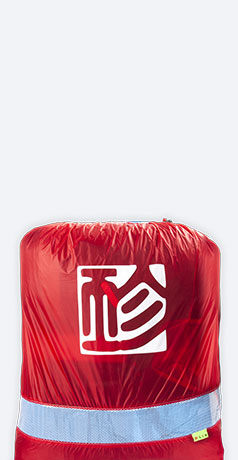
Inner bag

Compression strap

GIN stickers

Repair kit
🛡️ Gin Yeti 6 Safety Guide
Flying is freedom—but safety always comes first. The Gin Yeti 6 incorporates essential safety features, but you must actively maintain safe practices before, during, and after every flight.voile parapente
✅ voile parapente Pre-Flight Safety Checklist
-
Inspect the harness structure: Check stitching, fabric, and seams for any visible damage.
-
Test all buckles and carabiners: Ensure they operate smoothly and lock securely.
-
Check strap adjustments: Confirm chest and leg straps are customized to your size and firmly secured.
-
Inspect the rescue container: Verify pin security and deployment cable integrity.
-
Review your speed system: Make sure it connects cleanly to your wing’s speed bar.
☁️ In-Flight Safety Reminders
-
Always fly within your skill level: Match flight conditions with your training and experience.
-
Keep your reserve within reach: Know exactly how to access and deploy it under pressure.
-
Maintain posture: An ergonomic seating position ensures better control and energy conservation.
-
Stay aware of weather shifts: Even advanced gear can’t substitute for real-time judgment.
📦 Post-Flight Safety Routine
-
Dry your harness: Moisture can damage materials and compromise safety.
-
Store away from sunlight: UV rays weaken webbing and protective foam.
-
Log inspections and flights: Keep a record of hours flown and any incidents or anomalies.
🧭 Step-by-Step Guide: Using the Gin Yeti 6 Harness
🪂 Step 1: Prepare for Launch
-
Lay out your glider and harness on a clean surface.
-
Check that the rescue container handle is secure and the pins are locked.
-
Slip into the harness like a backpack and tighten shoulder straps evenly.
-
Fasten the chest strap and double-check leg straps using the anti-forget system.
-
Adjust all straps for a snug yet flexible fit—comfort and movement matter.
🧷 Step 2: Pre-Flight Alignment
-
Attach risers to carabiners securely, verifying symmetrical connection.
-
Connect your speed system if used—test for smooth pull and release.
-
Ensure there is no twist or tension in strap routing.
-
Confirm that the reserve handle is accessible and that deployment cables are clear.
🌬️ Step 3: Takeoff and In-Flight Use
-
Lean forward, jog, and inflate your wing using a forward or reverse launch technique.
-
As you lift off, slide into the seated position smoothly.
-
Once airborne, focus on posture: keep your back aligned, legs relaxed, and arms fluid.
-
Use side pockets or the radio holder mid-flight as needed without compromising focus.
🪂 Step 4: Landing and Post-Flight Care
-
As you prepare to land, shift weight slightly forward to ease transition to standing.
-
Upon touchdown, unbuckle slowly and check your reserve container seal again.
-
Remove any debris, wipe down harness if damp, and hang dry if necessary.
-
Store in a cool, dry location inside your glider bag or protective harness case.
✨ Pro Tips for Mastering the Gin Yeti 6
-
Practice your reserve deployment in a simulation environment—it builds muscle memory for emergencies.
-
Adjust your harness mid-flight if needed—comfort can change with altitude or thermals.
-
Log each flight’s performance to track comfort, posture adjustments, and air response.
-
Take time to test your ideal strap lengths before competition or long XC flights.
🪂 How to Fly with the Gin Yeti 6
Mastering Flight from Ground to Sky
The Gin Yeti 6 empowers you to experience flight with comfort, control, and confidence. Whether you’re launching from a mountain or soaring in thermals, this guide walks you through the full flight process—from setup to safe landing.thermal fuse fan
🔧 Step 1: Pre-Flight Setup
Before your feet leave the ground, preparation is everything.
✅ Gear Up
-
Lay out your wing in a horseshoe or rosette configuration depending on wind conditions.
-
Check risers and lines for tangles or snags.
-
Connect carabiners from risers to the harness securely.
-
Slip into the harness and tighten shoulder, chest, and leg straps.
💡 Tip:
Use the Gin Yeti 6’s intuitive strap system to adjust for a snug fit without restricting your breathing or movement. A well-adjusted harness boosts performance and reduces fatigue.voile parapente
🧭 Step 2: Launch and Takeoff
This is your transition from pilot to paraglider.
🚀 Forward Launch (Light Winds)
-
Face into the wind with lines taut and wing behind you.
-
Walk or jog forward while pulling gently on A-risers.
-
Let the wing inflate smoothly over your head—correct direction with brakes if needed.
-
Confirm canopy is fully overhead, then accelerate into lift.
🌬️ Reverse Launch (Stronger Winds)
-
Face the wing with your back to the wind.
-
Use the brakes to stabilize while you bring the wing overhead.
-
Once steady, turn forward (reverse-to-forward transition) and commit to takeoff.
🪂 Transition to Sitting
As you lift off, let your body weight settle into the Gin Yeti 6 harness naturally. Avoid forcing yourself into the seat. The ergonomic design supports a fluid transition from standing to seated flight.voile parapente
🌀 Step 3: In-Flight Control
Now you’re in the air—stay relaxed and focused.
🎮 Basic Control Techniques
-
Brake toggles control pitch and roll. Pulling left turns you left, and vice versa.
-
Weight shift helps initiate smooth coordinated turns.
-
Speed bar (if used) reduces your angle of attack, increasing glide speed.
🌤️ Thermalling Tips
-
Enter thermals with gradual turns.
-
Tighten your turn in the lift zone to climb efficiently.
-
Use the Gin Yeti 6’s comfort and weight distribution to maintain relaxed control during long climbs.
📡 Situational Awareness
-
Monitor weather conditions continuously.
-
Avoid crowded skies—give right-of-way according to paragliding rules.
-
Stay in active piloting mode—hands on brakes, eyes on surroundings.
🛬 Step 4: Landing Approach
A controlled landing is just as important as a good launch.
🔽 Descent Prep
-
Identify a safe, clear landing area.
-
Begin descending with gentle brake input or figure-8 maneuvers.
-
Position yourself upwind of your target to allow a gradual final glide.
⛅ Final Glide and Flare
-
On final, fly hands-up until you’re ~2–3 meters from the ground.
-
Initiate a smooth flare by pulling both brakes evenly.
-
Transition feet-forward and absorb impact with your legs.
🧼 Post-Landing Routine
-
Carefully unclip risers and step out of the harness.
-
Inspect gear for wear, dirt, or damage.
-
Reflect on your flight—what worked, what can improve?
🌟 Pro Flight Habits to Build Skill and Confidence
-
Fly regularly to sharpen skills and reaction time.
-
Join a club or fly with experienced pilots for community learning.
-
Attend safety clinics for reserve deployment and incident response.
-
Maintain your Gin Yeti 6 with consistent care—clean, inspect, and store properly.
✈️ The Gin Yeti 6 Advantage in the Air
Flying with the Gin Yeti 6 isn’t just about lifting off—it’s about enjoying full control, balance, and comfort in the air. The harness’s streamlined design enhances your glider’s performance while keeping you aligned and supported throughout flight. Whether you’re ridge soaring or exploring XC routes, the Yeti 6 adapts to your every move.
❓ Frequently Asked Questions (FAQ) – Gin Yeti 6
Q1: What type of pilot is the Gin Yeti 6 best for?
A: The Yeti 6 is perfect for hike & fly enthusiasts, XC pilots, and anyone seeking a lightweight, comfortable harness with integrated safety features.
Q2: Does the harness come with a speed system?
A: While the harness includes attachment points for speed systems, the actual speed bar setup is sold separately to allow customization.
Q3: Can I use the Yeti 6 for tandem flying?
A: The Yeti 6 is designed for solo use. For tandem flying, Gin offers harnesses specifically tailored for passengers or pilots.
Q4: Is the back protection removable or replaceable?
A: Yes. The EN 1621-2 certified back protector can be replaced when needed. Always replace after significant impact or aging.
Q5: What is the weight range supported by the harness?
A: The Yeti 6 comes in multiple sizes to support a wide range of pilot weights. Refer to the Gin size chart for precise fitting.
Additional information
| Size | 21, 23, 25, 27 |
|---|---|
| color | Lemon, Red, Turguoise |

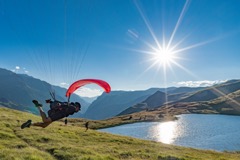
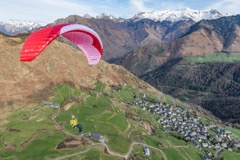
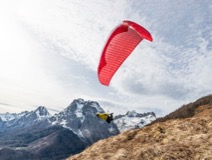


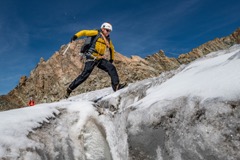

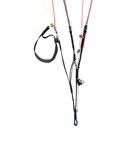


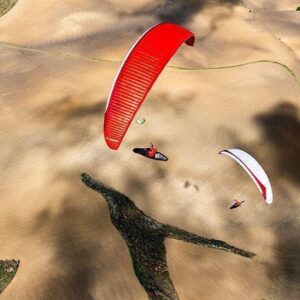

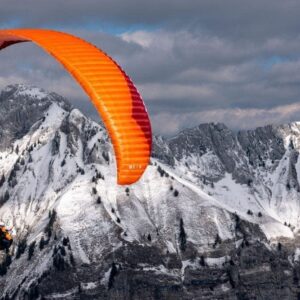
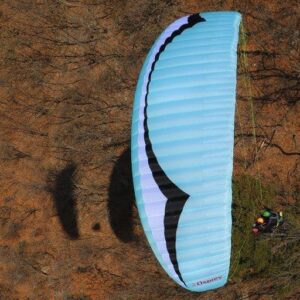
Reviews
There are no reviews yet.